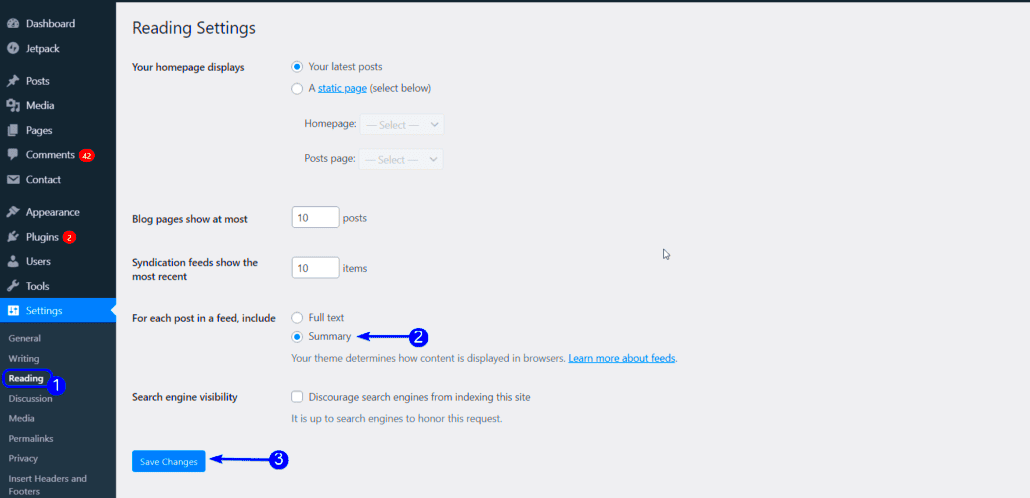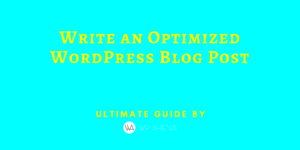RSS feeds are a convenient way to keep your audience updated with your latest content. In the context of WordPress, they serve as an automated method for sharing your posts, articles, and updates with subscribers who prefer to consume content via feed readers or platforms. Imagine having a loyal readership that gets notified whenever you publish something new—sounds great, right?
In this blog post, we’ll dive into the nitty-gritty of changing RSS feed settings in WordPress, ensuring that your content reaches your audience in the best possible way!
Why Change RSS Feed Settings?
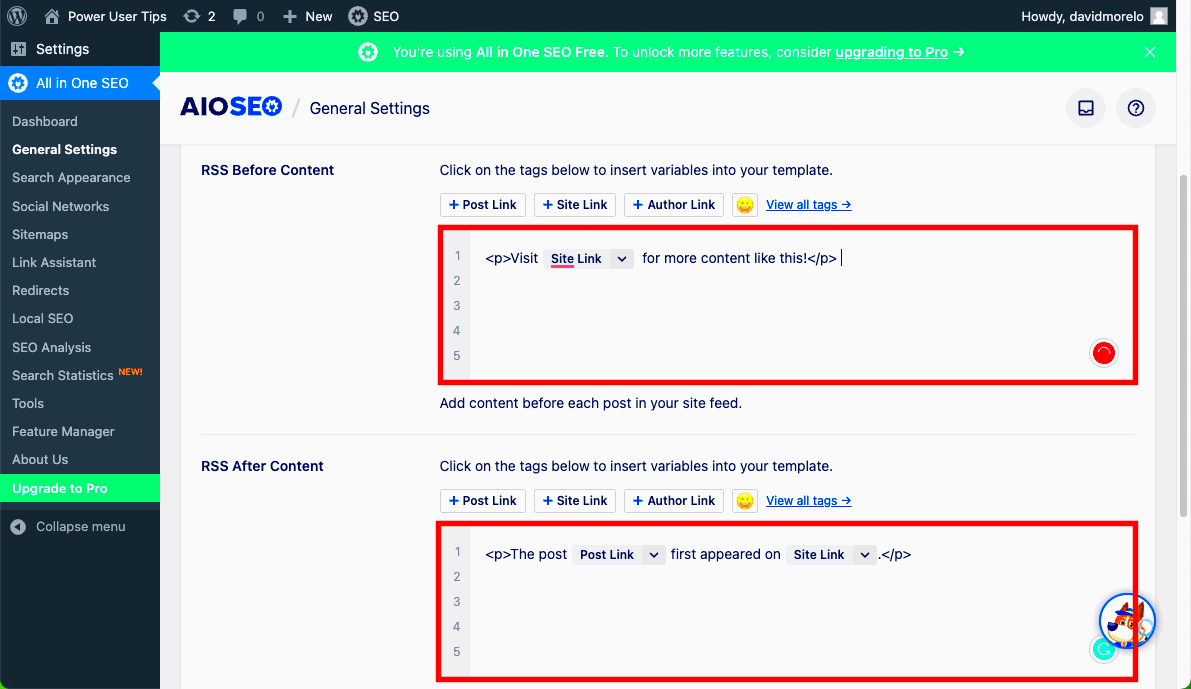
So, you might be wondering, “Why should I bother changing my RSS feed settings?” Well, there are several compelling reasons to consider:
- Control over Content Delivery: By customizing your RSS feed, you can decide what your readers see. This means you can show only summaries or the full content based on your strategy.
- Enhance Branding: A personalized RSS feed can reflect your brand’s identity. By altering the layout and content, you can create a more cohesive experience for your subscribers.
- Boost Engagement: With well-configured settings, you can drive more traffic back to your site, encouraging readers to visit rather than just consume content through third-party apps.
- Improve SEO: Optimizing your RSS feeds can enhance your search engine visibility. Search engines take notice of feeds with unique content, potentially helping improve your site’s ranking.
Changing your RSS feed settings is not just about tweaking technical aspects; it’s a strategic move to strengthen your connection with your audience. So, let’s dive deeper and find out how to make these changes in your WordPress setup!
Accessing RSS Feed Settings in WordPress
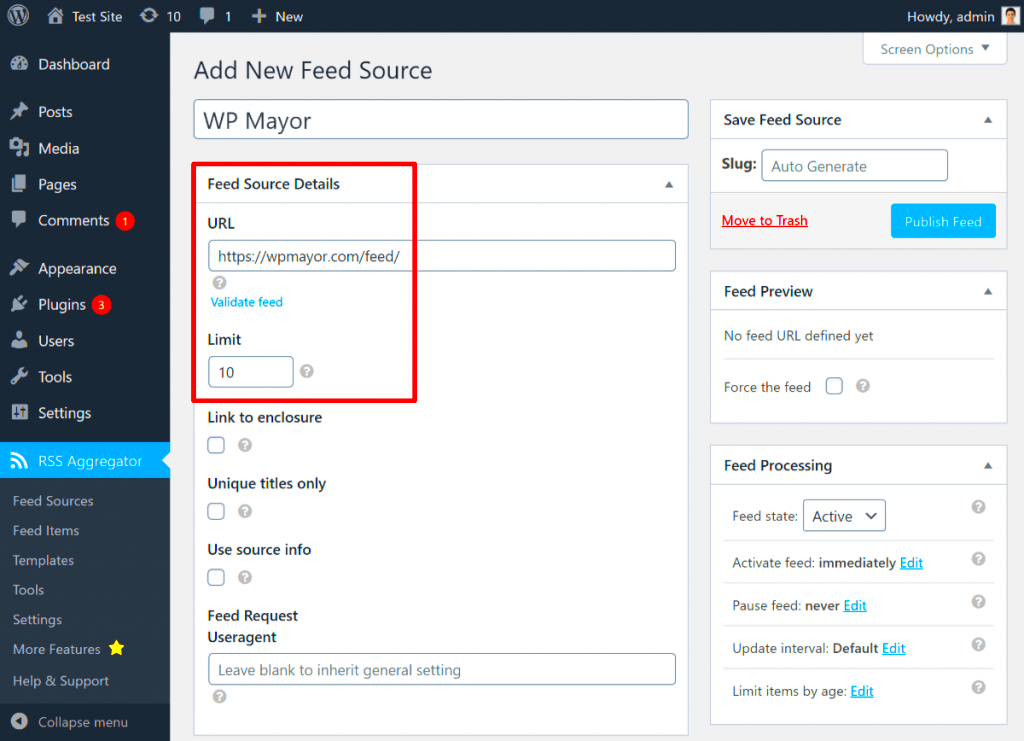
Accessing the RSS feed settings in WordPress is a straightforward process, and it’s essential if you want to customize how your content is distributed to your audience. To get started, you’ll need to log into your WordPress dashboard. Once you’re inside, follow these steps:
- Navigate to the Settings menu on the left-hand side of your dashboard.
- Click on Reading. This page controls various settings related to how your site presents content, including your RSS feed.
On this page, you’ll find various options that influence your RSS feed:
- Blog pages show at most: You can decide how many posts to show in your RSS feed. This is important as it determines the volume of content subscribers receive.
- Syndication feeds show the most recent: Here, you get to choose how many items will be included in your RSS feed.
- For each post in a feed, include: This option allows you to choose whether to include the full text of your posts or just a summary. If you want to drive more traffic to your site, consider using excerpts instead.
After making your adjustments, remember to click the Save Changes button at the bottom of the page. Your settings will now filter through to your RSS feed, ensuring that your audience receives content just the way you want it. Easy peasy, right?
Customizing Your RSS Feed Content
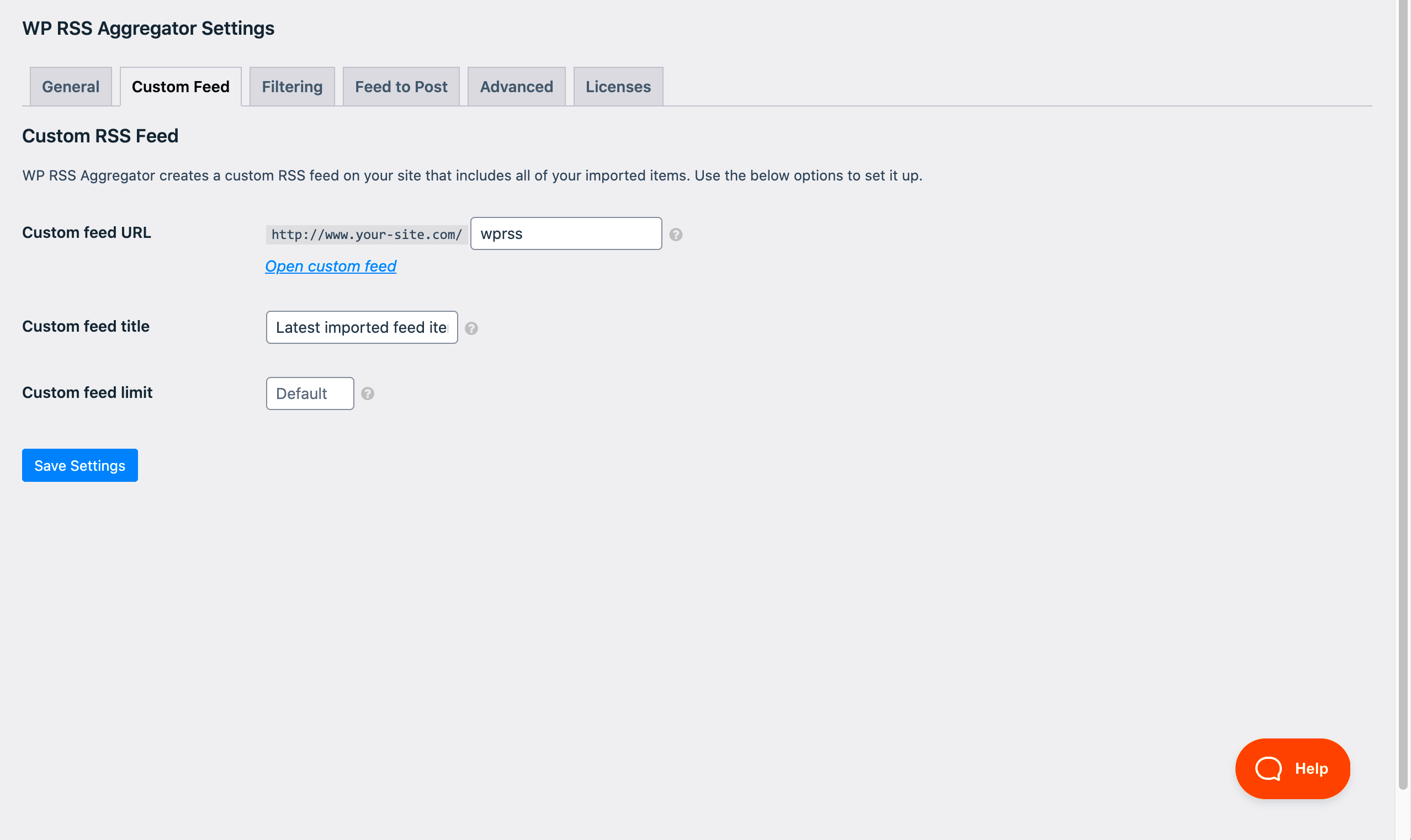
Once you’ve accessed your RSS feed settings, you may want to take customization a step further. Customizing how your content appears in the RSS feed can engagingly reflect your brand and improve engagement with your subscribers. Here are some ways to do this:
- Using Plugins: Consider using plugins like WP RSS Aggregator or RSS Custom Feed. These tools can help you modify your RSS feed with ease. They offer additional options such as filtering posts, adding custom elements, and more.
- Include Post Thumbnails: Visual content can drastically improve engagement. Adding thumbnails to your RSS feed can attract subscribers’ attention and enhance the overall presentation.
- Custom Feed Templates: If you’re up for a bit of coding, you can create custom feed templates. By modifying your theme’s
functions.phpfile, you can tailor the output of your RSS feed to include specific elements, such as categories, authors, or custom fields. - SEO Optimization: Don’t forget about SEO! Ensure that your RSS feed is optimized for search engines. Including meta descriptions and relevant keywords can improve visibility.
Testing is also crucial during this process. Always check how your RSS feed looks using a feed reader or validator to make sure everything is functioning properly. With the right tweaks, your customized feed can become a robust tool for connecting with your audience and keeping them updated with content that genuinely interests them.
Updating RSS Feed URL
Changing your RSS feed URL in WordPress might seem like a daunting task, but it’s actually quite simple once you get the hang of it. Whether you’re looking to change your feed URL for security reasons, branding considerations, or just to keep things organized, here’s how you can do it.
First and foremost, you need to be aware that WordPress generates a default RSS feed URL, which typically looks like this: http://yourwebsite.com/feed/. If you want to update this URL, you can take advantage of various plugins or customize it through your theme’s functions.php file. Here’s how:
- Using Plugins: There are several WordPress plugins available that let you customize your RSS feed URL effortlessly. Popular choices include ‘WP Feed Update’ and ‘RSS Includes Pages’. These plugins give you a user-friendly interface to update your feed settings.
- Modifying functions.php: If you’re comfortable with coding, you can add a simple function in your theme’s functions.php file. For example:
function custom_rss_feed() { return 'http://yourwebsite.com/custom-feed/';}add_filter('feed_link', 'custom_rss_feed');Make sure you replace ‘custom-feed’ with whatever you desire. After making these changes, check your new feed URL in your browser to ensure everything is working smoothly.
Lastly, remember to update any external links pointing to your old feed URL, so your subscribers and followers can still access your updates without a hitch!
Managing RSS Feed Plugins
There’s no shortage of RSS feed plugins available for WordPress, which can make managing your feeds a breeze! But with so many options, how do you know which ones are worth your time? Here’s a rundown of some great plugins and tips for effectively managing your RSS feeds.
Plugins can enhance your RSS feed functionality, allowing for customization, feed aggregation, and more. Here’s a quick list of popular RSS feed plugins:
- Feedzy RSS Feeds: This plugin allows you to easily import and display external RSS feeds on your site.
- Simple Feed Stats: Perfect for tracking your feed subscription growth, it provides insightful analytics.
- WP RSS Aggregator: Great for aggregating content from multiple RSS feeds, ideal for content curation.
To manage these plugins effectively, follow these steps:
- Install the plugin from the WordPress Plugin Repository.
- Navigate to the plugin settings to customize the feed according to your preferences.
- Regularly check for plugin updates to ensure compatibility with the latest WordPress version.
It’s also a good idea to explore the documentation provided by each plugin. They often contain tips on advanced settings that can further enhance your RSS feed’s functionality. With these tools and a little tinkering, you can manage your RSS feeds like a pro!
Best Practices for RSS Feed Settings
Setting up your RSS feed might seem straightforward, but there are some best practices that you should definitely consider to enhance its effectiveness. Implementing these strategies can help ensure that your content reaches your audience effectively, while also considering SEO and user experience.
1. Limit Feed Items: It’s generally a good idea to limit the number of items displayed in your RSS feed. Having too many items can overwhelm readers. Aim for anywhere between 5 to 10 posts to keep your feed manageable and engaging.
2. Use Descriptions Wisely: Instead of providing the whole post content in the feed, consider using excerpts or summaries. This not only encourages users to click through to your website for the full content, but it also helps with load times and reduces server strain.
3. Optimize for SEO: Include relevant keywords in your feed titles and descriptions. This can help your content get found more easily through feed readers that index RSS content. Don’t forget to also add meta tags in your feed to enhance its visibility in search results!
4. Monitor Frequency: Regular updates keep your feed fresh and your audience engaged. Aim for a posting frequency that’s sustainable for you – whether that’s daily, weekly, or bi-weekly. Consistency is key!
5. Encourage Subscription: Place a clear call-to-action inviting users to subscribe to your RSS feed. This can be through a dedicated subscription button on your website, or through social media announcements.
By implementing these best practices, you can ensure that your RSS feed not only serves your audience effectively but also amplifies your content’s reach and visibility online.
Testing Your RSS Feed Changes
After you’ve made updates to your RSS feed settings, it’s crucial to test them to ensure everything is functioning smoothly. Nothing is worse than having your audience frustrated due to broken links or incorrect content. So let’s walk through the process of testing your RSS feed.
1. Use RSS Validator: One of the easiest ways to check your RSS feed is through online RSS validators. These tools will analyze your feed and spot any errors or formatting issues. Simply input your feed URL and await the results!
2. Check Feed Readers: Subscribe to your feed using different feed readers like Feedly or The Old Reader. This will give you insight into how your content appears across various platforms. Ensure that it displays correctly and links back to your site without any hiccups.
3. Verify Content Display: Ensure that the titles, descriptions, and links to your posts are showing up as intended. Pay attention to how the feed displays images and any custom formats you’ve employed.
4. Analyze Engagement: After a few weeks of making changes, use analytics tools to check how many users are accessing your feed. If you notice a drop, you might want to revisit your changes and tweak them until you get better engagement.
5. Keep an Eye Out for Errors: Watch for any error messages or broken links in your feed over time. If anything appears faulty, address it immediately to maintain a good user experience.
By taking the time to carefully test your RSS feed changes, you’re not only ensuring a smooth experience for your audience but also maintaining the integrity of your content distribution strategy! Regular checks are a small investment for greater returns.
Troubleshooting Common RSS Feed Issues
RSS feeds are a powerful tool for distributing your blog content, but like any technology, they can sometimes run into problems. The good news? Most issues are fixable with a little troubleshooting! Here’s a guide to help you navigate through some common RSS feed issues you might encounter on your WordPress site.
1. RSS Feed Not Valid
One of the most common issues is that your RSS feed doesn’t validate. This usually means there’s an error in the XML structure of your feed. To check if your feed is valid, you can use online tools like the W3C Feed Validation Service. Here’s how to troubleshoot:
- Check for any missing or extra tags.
- Look for special characters that may interfere with the feed.
- Ensure that your theme or plugins aren’t conflicting with the feed output.
2. Feed Content Not Updating
If you notice that your feed isn’t updating with your latest posts, try the following:
- Clear your site cache, if you’re using a caching plugin.
- Check for any scheduled posts that may not have been published correctly.
- Make sure your server isn’t blocking XML requests.
3. Error Messages
You might come across error messages like “403 Forbidden” or “Feed not found”. If you do:
- Check your permalink settings; sometimes resetting them can resolve the issue.
- Look into your hosting provider settings, as they may be blocking access.
By keeping these tips handy, you’ll be well-equipped to tackle any RSS feed issues that come your way!
Conclusion
In the grand scheme of things, adjusting your RSS feed settings in WordPress may feel like a small task, but it holds significant importance. As we’ve discussed, RSS feeds enhance content distribution, keeping your audience in the loop with the latest posts and updates. If you run into issues along the way, don’t panic! The troubleshooting strategies we covered are designed to get you back on track in no time.
Remember, the effectiveness of your RSS feed can strongly influence user engagement and site success. So, don’t shy away from testing and optimizing your feeds regularly. Whether you’re managing a personal blog or running a larger media site, ensuring your RSS feed functions smoothly can provide a seamless experience for your readers.
In conclusion, keep experimenting, stay informed about updates, and don’t hesitate to seek help from community forums or professionals if needed. Happy blogging!

